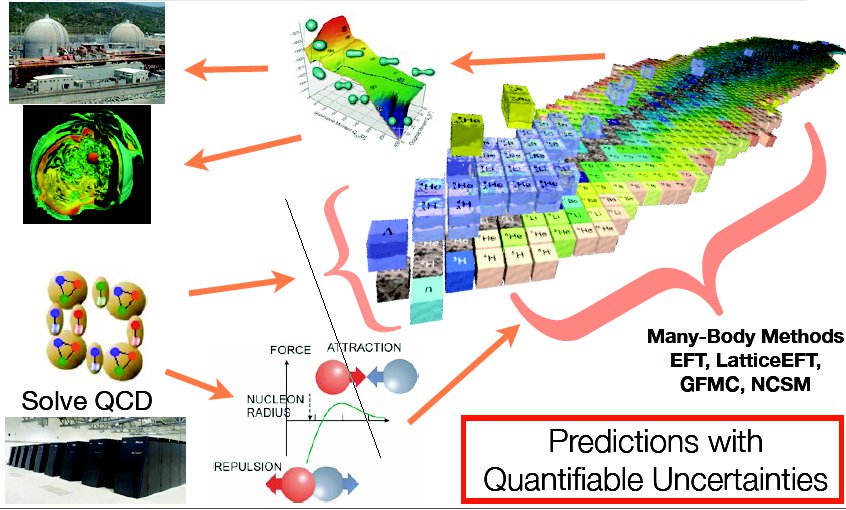
INSTITUTE FOR NUCLEAR THEORY
News
Home | Contact | Search | News archive | Site Map

|
INSTITUTE FOR NUCLEAR THEORY News
Home | Contact | Search | News archive | Site Map |
|||||
|
(INT Program July 30 - August 31, 2012) Reported by Silas Beane and Colin Morningstar Date posted November 26, 2012 |
|
The calculation of properties of excited baryon and meson resonances, exotic states, and multi-hadron systems using lattice QCD has only recently become possible due to advances in high-performance computing supplemented by novel methodologies and algorithmic developments. This INT program brought together lattice QCD practitioners in this area to address important questions for future progress, including: What is the most effective way of extracting information about (unstable) resonances from finite-box stationary-state energies? What is the most cost-effective method for extracting excited levels from a lattice QCD calculation? How can the reliability of the extracted energies through fits of asymptotic forms to the temporal correlations of hadron operators be improved? What explains the differences in some results obtained by different groups for various quantities? Can better variance reduction methods be found? How will the bottleneck in the number of spin-color contractions be overcome in the study of many-body systems? Over 35 scientists participated in this workshop from around the world. This was a workshop on theoretical calculations and methods. There were a number of talks on excited-state spectroscopy from lattice QCD, and several other talks focussed on finite-volume methods to extract resonances. A few seminars on two-particle scattering with lattice methods, and hadron interactions were presented. Murray Moinester from Tel Aviv University, a particle-physics experimentalist with the COMPASS group at CERN, gave two lectures from an experimental view on exotic mesons and pion polarizability at CERN COMPASS and doubly charmed baryons at Fermilab SELEX. Many interesting and novel ideas were aired during the workshop, which will stimulate new publications in this field or research. For three of the five weeks of the program, there was overlap with the INT Lattice Summer School, and the talks were scheduled so as to allow the summer school students to participate in the program talks. Many of the students attended the program talks, despite the full schedule of lectures in the summer school. There was a high level of participation by young people (at the graduate student and postdoctoral level), and the level of talent and ability in this group was rather impressive.

|